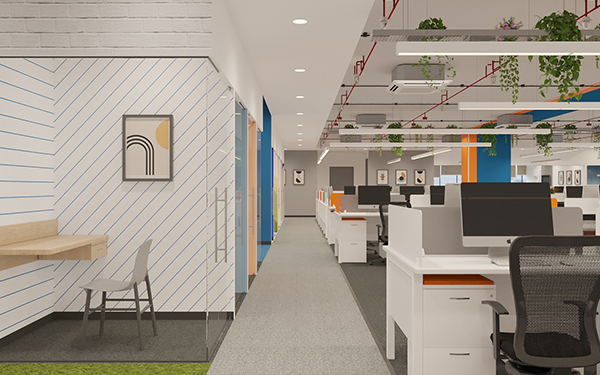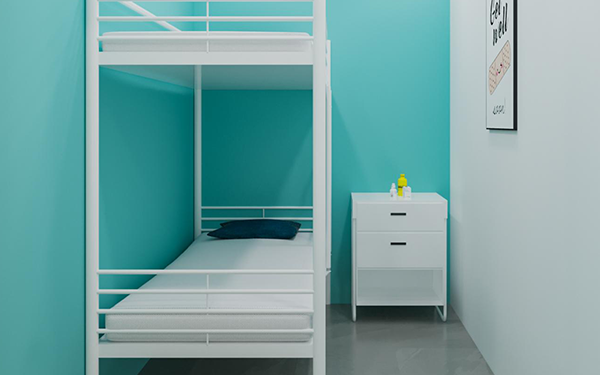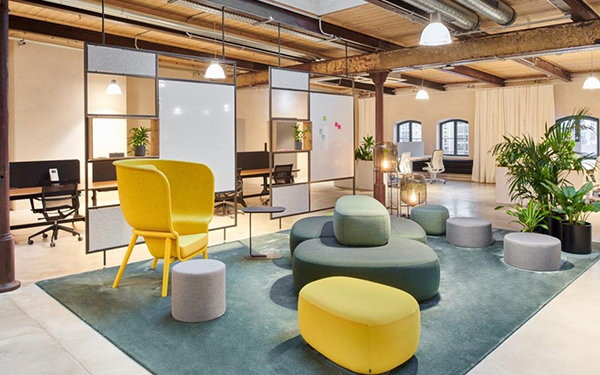A marketing office interior design space is not just a place for employees to work; it's also a reflection of the company's brand and image. A well-designed office can boost employee morale, productivity, and creativity, while also making a strong first impression on clients and visitors. When designing a marketing office interior design space, there are several key considerations to keep in mind.
The layout of the office interior design is essential.
An open floor plan can help promote collaboration and communication between employees, which is essential in a marketing office where teamwork is often required. However, it's also important to create private spaces for meetings and brainstorming sessions. Glass partitions or soundproof booths can be a great solution for creating private areas while still maintaining an open and collaborative atmosphere.


Lighting is a crucial factor in any office design.
Adequate lighting not only improves visibility but can also help boost employee productivity and mood. Natural light is best, as it provides a sense of openness and warmth, and can help reduce eye strain and headaches. If natural light is limited, consider adding artificial lighting that mimics natural light as closely as possible. Soft white LED bulbs are a good option for creating a warm, inviting atmosphere.
Color is an important consideration when designing a marketing office space.
Colors can evoke specific emotions and moods, and can even impact productivity. For example, blue is known to promote calmness and focus, while green is associated with balance and harmony. Office interior design consider using a mix of colors that reflect the company's brand and values while also promoting a positive atmosphere. Bright and bold colors can also be used to create a playful and creative environment.


Furniture is another key consideration when designing a marketing office interior design space.
In office interior design ergonomic chairs and desks are essential to ensure employee comfort and reduce the risk of musculoskeletal disorders. Comfortable seating areas can also be added to provide a space for employees to relax and recharge during breaks. Consider incorporating furniture that reflects the company's brand and image, such as customized chairs or desks.
Technology is an essential component of any modern office design.
A marketing office space needs to be equipped with the latest technology to support digital marketing efforts. This includes high-speed internet, video conferencing capabilities, and access to specialized software and tools. Consider creating a dedicated tech room where employees can test new technologies and collaborate on digital marketing campaigns.
In conclusion, designing a marketing office interior design space requires careful consideration of layout, lighting, color, furniture, and technology. The office interior design should be designed to reflect the company's brand and values while also promoting a positive and collaborative atmosphere. With the right design considerations, a marketing office interior design space can become a space that inspires creativity, productivity, and success.
Office interior design plays a critical role in the recruitment and retention of top talent. In today's highly competitive job market, companies must create a work environment that not only attracts the best candidates but also keeps them engaged and motivated. In this blog, we'll explore how office interior design can impact recruitment and retention of top talent.
1.First Impressions Count:
The first impression that candidates have of your office interior design makes or breaks the recruitment process. A well-designed office can create a lasting impression and leave candidates feeling impressed and motivated. A cluttered or unorganized workspace, on the other hand, can lead to negative perceptions and make candidates question if they want to work for your organization.


2.Design for Productivity:
A well-designed office can create an environment that promotes productivity and efficiency. An open layout with plenty of natural light can help employees feel energized and motivated to work. Ergonomic furniture and equipment can also make a big difference in office interior design with the comfort of employees and their ability to focus on their work. When employees feel comfortable in their workspace, they're more likely to stay engaged and productive.
3.Collaboration and Communication:
Office interior design can also impact how well employees collaborate and communicate with each other. A workspace that allows for easy communication and collaboration can lead to more efficient teamwork and better results. A well-designed office can also create spaces for meetings, brainstorming sessions, and collaborative work, promoting creativity and innovation.
4.Employee Wellness:
Employee wellness is becoming increasingly important in today's workplace. Companies are beginning to realize that a healthy workforce is a productive workforce. An office interior design incorporates elements that promote employee wellness, such as standing desks, ergonomic chairs, and plenty of natural light. By promoting wellness, companies can improve employee satisfaction and retention rates.

5.Culture and Branding:
A well-designed office can also help reinforce a company's culture and branding. An office interior design that reflects a company's values and mission can help create a strong sense of identity and purpose for employees. A workspace that incorporates the company's branding elements can also help create a cohesive and consistent image for the organization.
6.Conclusion:
Office interior design plays a critical role in the recruitment and retention of top talent. A well-designed office can create a positive first impression, promote productivity, encourage collaboration and communication, improve employee wellness, and reinforce company culture and branding. By investing in office interior design, companies can create a work environment that attracts and retains top talent, resulting in a more engaged and productive workforce.
The executive office is the heart of any business. It's the place where important decisions are made, deals are signed, and goals are set. So, it's crucial to have a well executive office interior design that reflects the company's values and culture. In this blog post, we will discuss some design strategies for optimizing an executive office.
Use natural light:
Natural light is an essential element in any office interior design. It not only makes the office look brighter and more inviting, but it also has numerous health benefits. Exposure to natural light can boost productivity, reduce stress, and improve mood. So, make sure your executive office has plenty of windows that let in natural light.


Choose comfortable furniture:
The executive office interior design should be a comfortable space where the executive can work for long hours. So, it's essential to choose comfortable furniture that provides support and helps maintain good posture. A comfortable chair, desk, and other furniture can improve productivity and reduce the risk of back pain.
Keep it simple:
The executive office should have a clean, uncluttered look. Too many decorations or accessories can be distracting and make the space feel cluttered. So, keep it simple and focus on a few key pieces that reflect the company's values and culture.

Use colors wisely:
Color is a powerful design tool that can influence mood and behavior. So, it's important to use colors wisely in the executive office interior design. Neutral colors like white, gray, and beige can create a calm and professional atmosphere, while bold colors like red or orange can create a more energetic and stimulating environment. The choice of colors will depend on the company's culture and brand.


Personalize the space:
The executive office interior design should reflect the personality of the executive. Adding personal touches like family photos or artwork can make the space feel more personal and inviting. It can also help the executive feel more comfortable and relaxed.
Incorporate technology:
Technology is an essential part of any modern office interior design. So, make sure the executive office has the latest technology, including a high-speed internet connection, a large screen monitor, and a comfortable keyboard and mouse. The right technology can improve productivity and make work easier.

Pay attention to lighting:
Lighting is an essential element of any office interior design. It not only illuminates the space but also creates a mood and atmosphere. So, it's important to choose the right lighting for the executive office.
Soft lighting can create a calm and relaxing atmosphere, while bright lighting can create a more energetic and stimulating environment.
In conclusion, optimizing an executive office requires careful attention to detail. The office interior design should be comfortable, inviting, and reflect the company's culture and values. By following these design strategies, you can create an executive office that is both functional and beautiful.